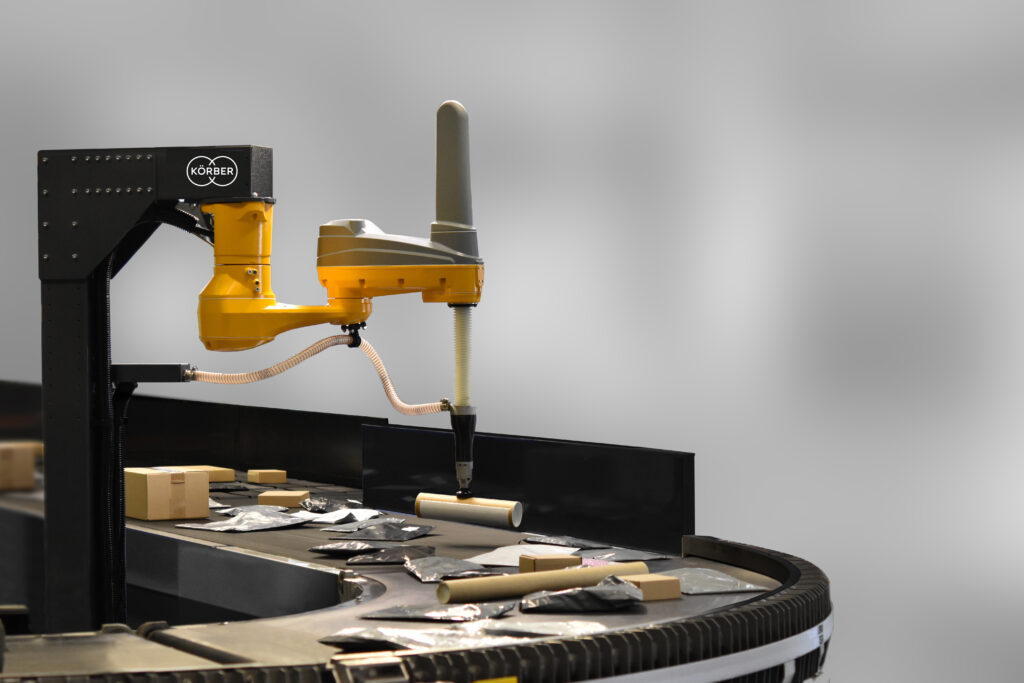Richard Huber, product line manager at Körber Supply Chain, discusses the rapid evolution of pick-and-place robots in the logistics sector
 How have you seen robotics technology evolve over the last 5-10 years?
How have you seen robotics technology evolve over the last 5-10 years?
In recent years, technological progress has made it possible to quickly compute complex recognition tasks. As a result, more and more robotics and AI-based vision systems have made their way into parcel handling – in the form of autonomous vehicles (AGV/AMR) as well as pick-and-place robots. Numerous customers are testing various use cases – for pick-and-place robots for the most part. A few are taking shape as being useful for a broad range of applications. These are especially for labor-intensive tasks, such as loading induction belts, culling non-machinable items and loading and unloading AGVs and AMRs.
What are postal/logistics operators’ main requirements when it comes to investing in robotics?
The robotic solution must accommodate a variety of different shipments and also different packaging materials, such as plastic, paper or cardboard. It has to be able to quickly and reliably handle items with varying forms and shapes. Retrofitability, scalability and numerous vision system requirements all need to be taken into account – and the solution must be easy to integrate into existing systems. It is often advantageous when everything is supplied from a single source by an experienced integrator such as Körber. Our customers likewise ask for robots that can cull out shipments that are not wanted in the subsequent processes, and execute format and/or volume splits or loading applications.
How can postal/logistics operators best identify where robotics would be beneficial?
Managing labor-intensive processes is one of the major challenges we face. This is often exacerbated by a shortage of employees and high labor costs. To overcome this hurdle, efficient automation solutions are indispensable. Robotics are generally useful for handling consignments that require a lot of personnel, with varying weights and sizes, and for monotonous and non-ergonomic work.
How do you think robotics technology will evolve over the next 5-10 years?
There will be more and more robotic solutions in the coming years. First the pilot tests will be conducted, then series solutions developed. Many more use cases will evolve, also for larger and heavier shipments. This will be accompanied by new developments in gripping and vision systems and, as a result, even more new use cases. Loading and unloading, which today is still personnel intensive, are ideal for robots. Other uses include the direct loading of a sorter, without induction – and loading and unloading of AGVs or similar, as well as roll containers – or even swap bodies. In the future, collaborative robots (cobots) will work side by side with humans, with the cobots taking over the more monotonous, non-ergonomic tasks. This allows for growth, even with a shortage of personnel.
To learn more about VarioPick from Körber, check out our feature on robotics in the June issue of Parcel and Postal Technology International, here.


